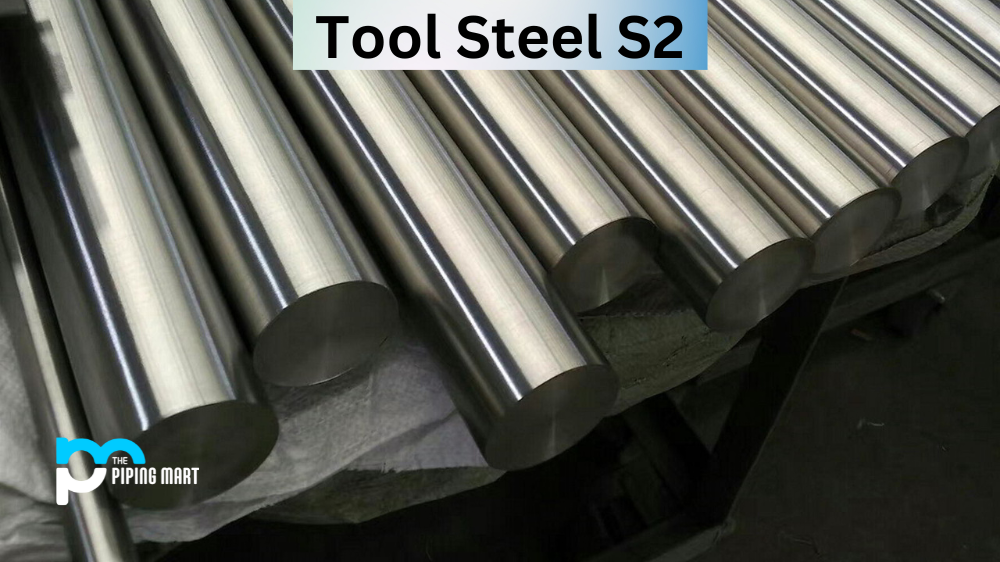UNS N06022 is one of the most popular nickel-based alloys in many industries. It is known for its excellent resistance to corrosion and high temperature, making it a great choice for applications where strength, durability, and chemical resistance are key factors. In this blog post, we’ll look at the chemical composition of Hastelloy C22, its machinability, and its chemical resistance.
What is Hastelloy c22?
Hastelloy C22 is a nickel-chromium-molybdenum alloy with outstanding corrosion resistance in harsh and highly corrosive environments. It is one of the most popular alloys for applications requiring exceptional corrosion resistance to sulfuric acid, hydrochloric acid and other chloride-bearing media. This versatile alloy also maintains high strength and good ductility during extreme temperature changes, making it ideal for numerous chemical processes. Hastelloy 2.4602 has superior weldability and excellent fabricated formability, making it the perfect choice for any industry requiring superior performance from its products or equipment.
What Forms is Hastelloy c22 Available at Piping Mart?
- Hastelloy C22 Fasteners
- Hastelloy C22 Nuts
- Hastelloy C22 Bolts
- Hastelloy C22 Plates
Super Alloy Hastelloy C22 Chemical Composition
UNS N06022 chemical composition is primarily of nickel (62%), chromium (21%), molybdenum (13%), iron (1%), manganese (1%), silicon (0.3%), cobalt (0.3%) and tungsten (0.3%). This combination makes it highly resistant to corrosion and oxidation at high temperatures. The addition of chromium also protects against chloride ion stress corrosion cracking and other corrosive media such as sulfuric acid, hydrochloric acid, acetic acid, formic acid, phosphoric acid, nitric acid, and alkalis like sodium hydroxide, and potassium hydroxide.
| Element | Content (%) |
|---|---|
| Chromium, Cr | 20-22.5 |
| Molybdenum, Mo | 12.5-14.5 |
| Tungsten, W | 2.5-3.5 |
| Cobalt, Co | 2.5 min |
| Iron, Fe | 2-6 |
| Manganese. Mn | 0.5 max |
| Vanadium, V | 0.35 min |
| Silicon, Si | 0.08 max |
| Phosphorus, P | 0.02 max |
| Sulfur, S | 0.02 max |
| Carbon, C | 0.015 max |
| Nickel, Ni | Remainder |
UNS N06022 Hastelloy C22 Physical Properties
Material C22 is an incredibly versatile and resilient alloy. Its high chromium, molybdenum, tungsten, and iron content has outstanding corrosion resistance even in severe environments like those containing chlorides and strong oxidizing agents. It is also surprisingly malleable and ductile, with a hardness of about 90HV10 compared to pure nickel’s 75HV10. Though heat-treatable, adding strength without significantly sacrificing ductility only requires half of the heat treatment applied to other wrought alloys. It can be forged, rolled into sheets and formed into varying shapes, welded by traditional methods and overlaying techniques – making this material great for use in petrochemical engineering equipment fabrication and similar applications. Alloy C22 is truly the all-purpose choice for those who want superior physical properties and exceptional corrosion resistance!
| Properties | Metric | Imperial |
|---|---|---|
| Density | 8.69 g/cm³ | 0.314 lb/in³ |
| Melting point | 1399°C | 2550°F |
2.4602 Hastelloy C22 Mechanical Properties
Hastelloy C22 is a superalloy used in many industries due to its high corrosion resistance and mechanical strength. It is composed of nickel, chromium and molybdenum, providing high heat resistance and weldability. The alloy has tensile strength of up to 90 ksi, yield strength of up to 62 ksi, and elongation at break up to 48%. High nickel alloy C22 exhibits excellent ductility under cold and hot working conditions, allowing for superior weldability with low carbon precipitation levels. It is widely used in power generation, chemical processing, pulp and paper production, wastewater treatment, off-shore oil production and other heavy industries that require highly durable components.
| Tensile Strength | Yield Strength | Elongation |
| minimum, ksi | minimum, ksi | minimum, % |
| 100 | 45 | 45 |
C22 Hastelloy Material Properties
Hastelloy 2.4602 is renowned for its impressive resistance to corrosion and abrasion. An alloy of nickel, chromium, molybdenum and tungsten, Hastelloy C22 is known for its excellent thermal stability and toughness when exposed to a variety of corrosive materials over an extensive temperature range of 232°C – 700°C. It has an unbelievable ability to resist attack from speciality chemicals such as phosphoric acid, formic acid and acetic acids makes it an invaluable material in several industries, including the oil & gas sectors. In addition to its resistance qualities, C22 Hastelloy offers high-level stress rupture performance and good oxidation at high temperatures, ensuring durability and longevity.
C22 Hastelloy Equivalent
- ASTM B366
- ASTM B564
- ASTM B574
- ASTM B575
- ASTM B619
- ASTM B622
- DIN 2.4602
C22 Hastelloy Specifications
|
UNS |
|
|
Hastelloy C22 Bar |
ASTM B574 |
|
Hastelloy C22 Sheet |
ASTM B575 |
|
Hastelloy C22 Plate |
ASTM B575 |
|
Hastelloy C22 Fitting |
ASME SB-366 |
|
Hastelloy C22 Forging |
ASME SB-564 |
C22 Hastelloy Uses
UNS N06022 Hastelloy is an alloy with exceptional corrosion resistance that offers a wide range of chemical, power generation, and oil & gas applications. Its high chromium content ensures excellent formability and weldability while providing outstanding protection against numerous forms of corrosion. In addition, its nickel content allows for good ductility and stress-corrosion cracking resistance. It is widely used in pipes, fittings and valves and in more specialized products such as heat exchangers, tanks, pumps and other process components exposed to harsher environments such as salt water or seawater. What’s more is that Hastelloy C22 has the advantage of being machinable, making it a popular choice for many industrial applications where high performance plays a factor.
Hastelloy C22 Machinability
N06022 has excellent machinability properties due to its low carbon content, which helps reduce tool wear when cutting or drilling into the metal. It can be cut with conventional tools such as saws and drills but should be done carefully since it is difficult to machine due to its hard nature. When machining Hastelloy C22, it’s important to use lubricants such as water-soluble oils or synthetic coolants to help reduce friction between the workpiece and the tools used during the process. High-speed steel tools should be used for better results as they provide better strength than carbide tools when machining this alloy.
Nickel Alloy C22 Hardness
Hastelloy C22 is an alloy prized for its unique combination of properties, making it incredibly versatile. It is known to have extremely high resistance to corrosive environments while offering excellent strength and hardness. The actual hardness of Hastelloy C22 can range from 40 to 50 Rockwell (C), making it well-suited for applications involving extreme temperatures and pressure. Overall, this material provides the perfect combination of strength, corrosion resistance and the ability to withstand harsh conditions, making it the ideal choice for various industrial purposes.
Hastelloy c22 Heat Treatment
Hastelloy C22 is a corrosion-resistant alloy used for many industrial purposes, such as chemical processing, smelting and hydrocarbon-based processes. As part of the Nickel-Chromium family, it benefits from increased temperature strength capabilities, making it ideal for heat treatments. Hastelloy C22 Alloy can withstand extreme temperatures ranging from atmospheric (including cryogenic) to 1300°F for long periods without losing physical properties. In traditional heat treatment methods, this resilient alloy can be heated to 1850°F and then cooled gradually or much faster, depending on the desired results. Using these procedures allows manufacturers to significantly extend the life of their components while maintaining optimal performance levels.
Chemical Resistance
Hastelloy C22 UNS N06022 offers outstanding chemical resistance due to its combination of molybdenum, chromium, and tungsten, which protect against oxidizing media like nitric acid, hydrochloric acid, and acetic acid while still retaining good mechanical strength even after prolonged exposure in these environments. It is also highly resistant to pitting corrosion in seawater environments thanks to its low carbon content, which helps prevent pitting from occurring on parts exposed to these conditions over time. Finally, it has excellent weldability, making it easy to fabricate components using this alloy without sacrificing its strength or resistance properties during welding.
Conclusion
C22 Hastelloy offers an impressive array of features that make it ideal for many applications in different industries where strength and durability are required, along with excellent chemical resistance properties. Its combination of nickel-chromium-molybdenum makes it highly resistant to oxidation at high temperatures while maintaining good weldability for fabrication. Its low carbon content also protects against pitting corrosion in seawater environments while allowing for easy machinability with conventional tools such as saws or drills with minimal tool wear over time. If you need a strong alloy that can resist harsh chemicals, consider investing in Hastelloy C22!

Pipingmart is B2B portal specializes in industrial, metal and piping products. Also, share latest information and news related to products, materials and different types grades to help business dealing in this industry.




